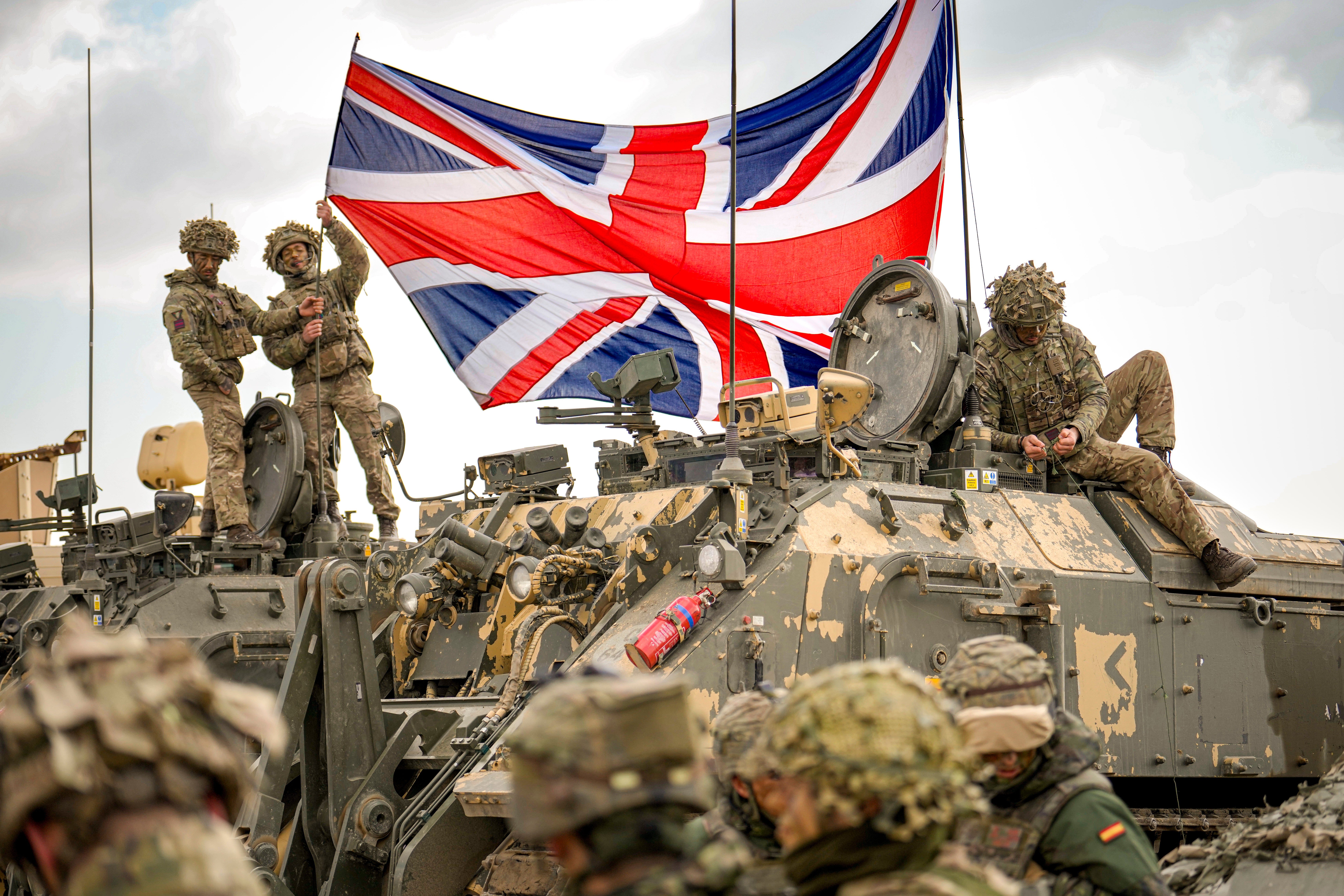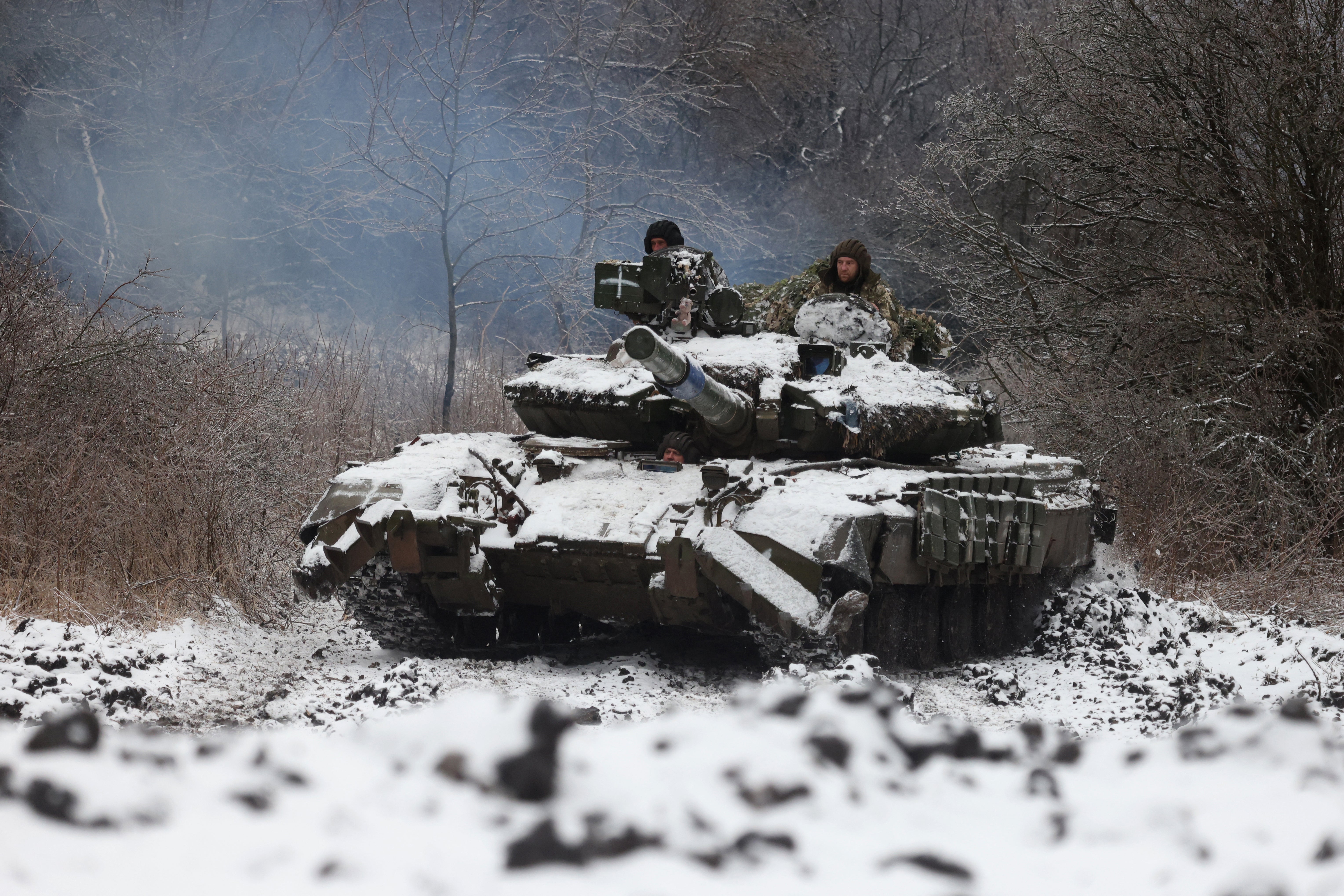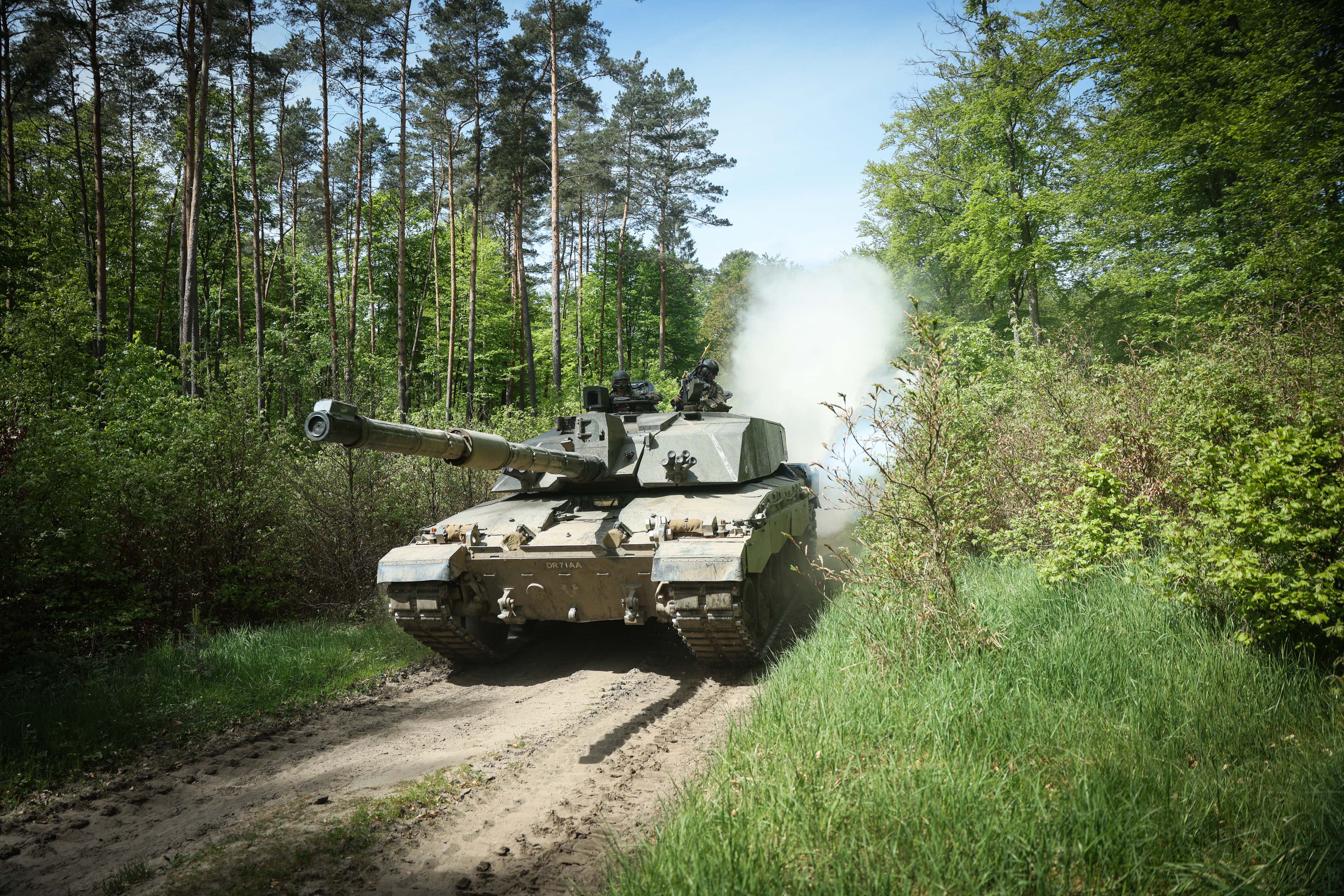Twenty-thousand troops? We only have 25 main battle tanks working at best
Left to rot in sheds, our equipment is either ancient, non-existent or yet to arrive, while ammunition stocks would not last a week if push came to shove, says defence expert Francis Tusa


When news that the UK would be at the front of the queue to provide troops for a Ukraine peacekeeping force, possibly as many as 20,000, a contact from army headquarters at Andover messaged me: “Where’s this 20,000-figure come from? Who’s briefing this? We couldn’t do this in a month of Sundays!”
The next few days saw this “offer” drop to 10,000 to 12,000 troops for the as-yet-unspecified ground force – but the panic among army planners was much the same: there has been no requirement for such a deployment, the army is not set up for such numbers and has not been funded to do so.
And, worse, the army is at a nadir as regards its capability to provide robust, capable, war-fighting forces of the type that would be needed for Ukraine – equipment is either ancient, non-existent, yet-to-arrive; ammunition stocks would not last a week if push came to shove; and communications systems are old and flaky.
It might not go too far to suggest that the British army is at its lowest nadir since June 1940, after Operation Dynamo saw the British Expeditionary Force evacuated from Dunkirk.
Now, the main battle tank (MBT) force is at a disastrous low. The Challenger 2 fleet (just over 400 were bought in the 1990s) has a notional strength of 213 tanks, after 14 were donated to Ukraine. However, these have been at the receiving end of “malign neglect” – maintenance regimes slashed in the 2000s and 2010s, spares not purchased, and supply chains disappearing as companies went bust. In 2023, it was reported that only around 160 of the fleet was in any fit state to be used on operations (after extensive, expensive work) – and the situation got worse.
The end result? The Royal Armoured Corps has not been able to deploy a realistic Challenger 2 regiment of 59 tanks for many years. Lack of available Challenger 2s has meant that the army’s ambition for MBTs has been at the 20 to 25 level, at the very best.
When Denmark and Sweden have more credible tank forces than the United Kingdom, you know there’s an issue. And, as the Ukraine war has shown, tanks do have a major role, especially if a peacekeeping force were to be a credible deterrent.
The Royal Artillery used to have a force of over 100 self-propelled AS90 artillery pieces. But much like the Challenger 2 fleet, this had been left to rot, with only a handful available even for training. Just before Covid, I sat next to a lieutenant colonel who was taking over an AS90 regiment: “I have 24 guns in the shed, no tracks, no engines. I will have to do a lot of work to stop morale falling.” That was over five years ago, and, again, the issues of no spares and defunct supply chains have not made this situation any better.
At least 32 AS90 have been gifted to Ukraine – an entirely sensible move. But this has left the army with little to no artillery. An interim batch of 14 Swedish Archer 155mm guns has been bought – but this is an incredibly limited number. And if the Ukraine War has shown us anything, artillery is still the queen of the battlefield. A British force deployed to Ukraine would need substantially more artillery, or would lack credibility.

And even assuming that the army could deploy 12 Archers as part of a Ukraine ground force (24 to 36 is what would be needed, at least), to make them credible they’d need the ammunition stocks.
In combat, Ukraine has shown that you have to budget for 200 shells per day, per gun – and that’s a floor, not a ceiling. And you’d need at least 30 days’ supply, maybe 60 days. In total, that’s a minimum of 75,000 shells, with a cost of £350m, and as high as 150,000 shells at £700m. At present, the UK simply does not hold anything like the sort of artillery ammunition stocks that would be needed in conflict. Indeed, it will take several years for these to be reached.
These are two vignettes – but they are representative of the parlous equipment state of the British army. Other armoured vehicle fleets are equally in dire straits. Think about it: 35 years ago, Warrior infantry combat vehicles charged into Kuwait; 30 years ago, a Warrior battlegroup was deployed to Bosnia amid much acclaim. The vehicles that are still in service are substantially the same as they were – opportunities to modernise and upgrade have been forever pushed aside.

Some might point to areas where the picture isn’t all that bad. The Boxer armoured personnel carrier is in full production, vehicles are being delivered to the user; the Challenger 3 upgrade, to create a new, modern version of the current Challenger 2 is underway. The Ajax family of armoured vehicles is also in production; and last year, an agreement was signed with Germany to cooperate and co-produce an artillery version of Boxer. So, the darkest time is just before dawn and we can now see the first glimmers of sunlight on the horizon.
However, and here’s the beef, Challenger 3 tanks won’t be delivered for at least 2 years, and these will be for trials, not for operations. There have been offers by industry to accelerate Boxer deliveries that have not been accepted by the army/MoD, so we are some years off from the army to be able to deploy into combat areas.
Similarly, new artillery systems won’t arrive until the end of the decade, a five to six-year wait (in contrast, the time between order and delivery of Ukraine’s Boxer artillery systems was 27 months. There have also been offers of accelerated deliveries for the UK, but no decisions have yet been made). Ajax? Who knows? It is already a decade late.

So, what can the army offer for a Ukraine peacekeeping force? “Can you round up 12,000 troops with their weapons, on a parade square, and then put them on buses to Ukraine? Probably,” says my Andover source. “But what can they do once they are there? There are unmarked minefields everywhere, so you’d need a whole load of protected vehicles – which we either don’t have, or we let them moulder in sheds. So, what? Let them patrol in unarmoured Land Rovers again? That went well in Iraq and Afghanistan.”
And even if you could round up a 12,000 force, after six to eight months you’d need to rotate them with another 12,000 troops, the same again six to eight months after that, and so on. Under the current funding arrangements, the army (and the same is true for the Royal Navy and RAF) is currently not organised to do this.
Regarding the costs of any Ukraine peacekeeping operation, taking ones from the 1990s and 2000s, 12,000 to 15,000 troops would be £3bn to £5bn at the very least. Again, the army is not funded for this, so it would have to come out of central reserves.
A wider set of questions, therefore, needs to be asked. Has the army spoken truth to power about what it can realistically do? Or has the famed “can do” attitude been to the fore: “Don’t worry: it’ll be alright on the night?” Has institutional embarrassment meant that deficiencies have not been highlighted, so the prime minister doesn’t have a true picture of how bad things really are?
Join our commenting forum
Join thought-provoking conversations, follow other Independent readers and see their replies
Comments

Bookmark popover
Removed from bookmarks